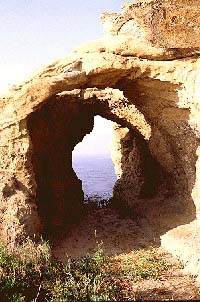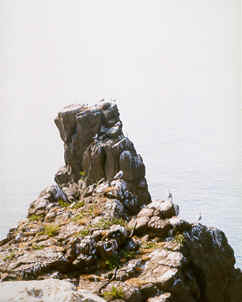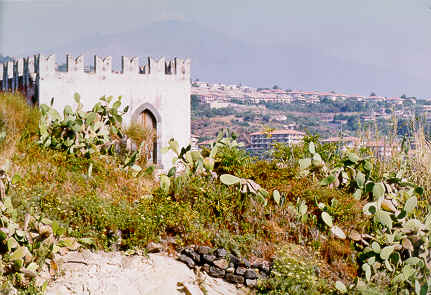|
||||
|
The Cyclopean Islands |
||||
|
|
The Lachea island |
|
Lachea Island is part of the small Lacheo archipelago that is in front of the sea of Acitrezza. “L’Isola” (The island), as commonly it is called from the inhabitants of the place, has an irregular shape, the side in front of Acitrezza is approximately of 250 metres of extension, it has got a surface large more than two hectares. The top of the island is constituted by clays of sandy colour that are situated on the basaltic formations. Always in the advanced part, reachable by stone stairs, there is a manufacturing which is the centre of the ichthyic museum, an old sink and a small dwelling dug into the hardened clay, that probably it was the dormitory of Saint John the anchorite, hermit at the end of the XI century. At the bottom, in front of Acitrezza,there is an other building that is a small centre of the caretaker. |
|
||||||||
|
From the beginning to now |
|
The
birth of the Lachea Island and the Faraglioni making part of the
Lacheo archipelago would be approximately to 500,000 years
ago, when this zone was interested of a rich submarine eruptive activity
that made come up these
basaltic-argillaceous formations. The name of Lachea comes from the
“Odissea” by Omero, when Ulisse caught up the island in the land of
the Cyclopes. Anciently, the island made up of the territory of Ancient
Aci, but, when this city was divided, it passed in possession to the
Prince Reggio of Campofiorito exactly on the January of the 1672. |
|
Fauna and flora |
|
Lachea island is famous also for a rare reptile living on the island, seen that it is impossible for him the earthly contact. The lizard called Podarcis sicula ciclopica is an endemic subspecies, that remained alone for thousands of years from the species present on the firm earth, it has had different evolution making it become rare. There are other types of invertebrates like Collemboli, Coleopters, Imenotteri and Lepidotteri. Among the Aracnidi Gnafosidi there is in particular the Urozelotes mysticus, only example on the island. Interesting can be among the birds, that they make just the nest on the island, the so-called "passera sarda" Sardinian hen-sparrow. In winter, the island becomes the refuge of seagulls and cormorants. |
|
|
|
Flora
of the island Lachea was surely damaged by the exploitation that was made of
its ground, with the cultivations, at the beginning of 1800,
when it was given in
emphyteusis. Such systems have modified
the natural evolution of the flora. |




